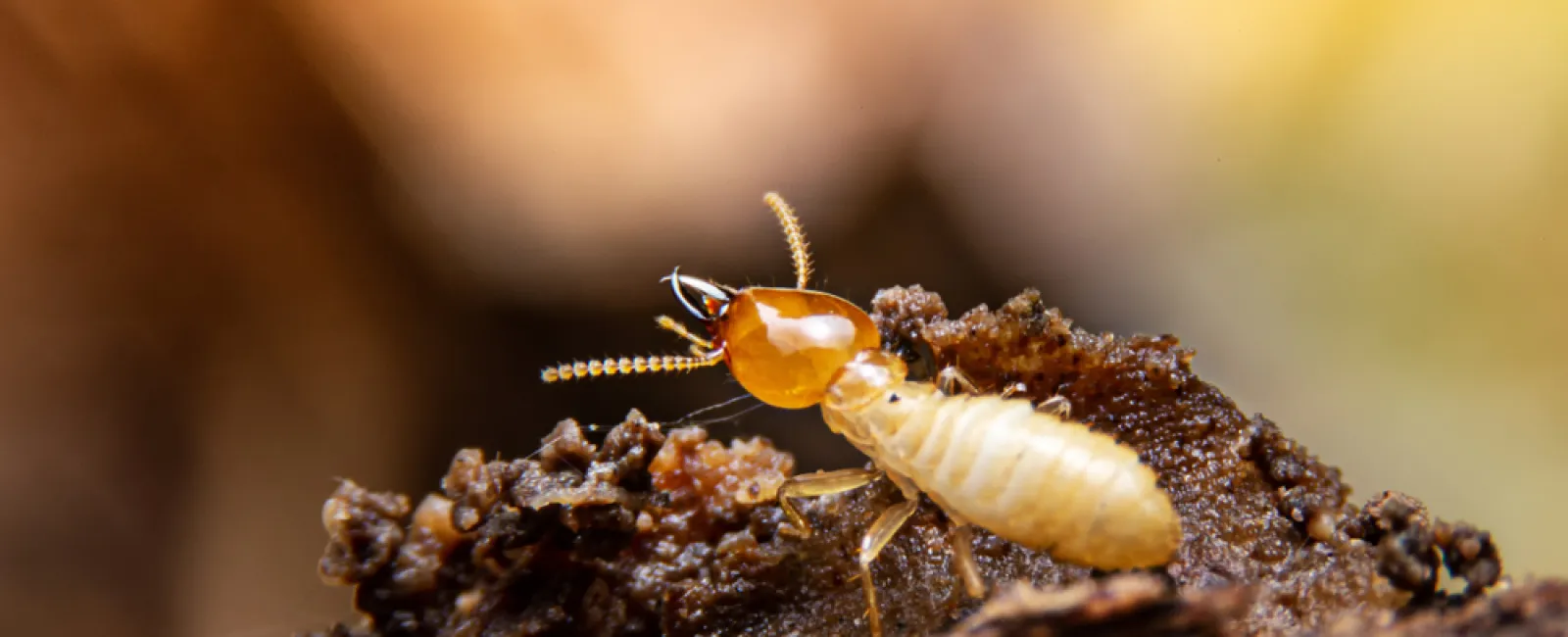Termites: What's the Deal?
They're tiny. They're sneaky. And they've got a serious appetite for destruction. We're talking about termites: those infamous structural pests that feast on wooden structures, dead plants, and your peace of mind. At Greenix, we offer proactive services to help keep your home pest-proofed against these creepy crawlers.
Below, we're answering your most pressing termite questions so you can spot telltale signs of a termite infestation and take action before your home becomes the main course.
Q: What are termites, really? Are they just glorified ants?
Nope, they're their own thing. Termites are social insects that live in organized colonies, usually hidden out of sight (which is part of the problem). Unlike winged ants, which they're often confused with, termites comprise castes (worker termites, soldier termites, and reproductive termites) that work together to build, breed, and (unfortunately) break down your home.
Q: What do termites eat?
Brace yourself: termites eat wood. But they're not picky. They'll also chew through dry wood, decaying wood, exposed wood surfaces, tree stumps, and wood debris…basically, anything with cellulose. That includes your baseboards, beams, and even your beloved backyard pergola.
Q: What are the different termite species I should know about?
While there are over 2,000 termite species worldwide, here in the U.S., you're most likely to meet:
Subterranean termites - The most destructive. They build mud tubes for moisture and hide underground.
Drywood termites - No need for soil. These termites nest directly inside dry wood.
Dampwood termites - As the name implies, they prefer damp, decaying wood and rarely infest homes…unless your home is very humid.
Q: What are termite swarms? Are they flying at my house on purpose?
Yep, they might be. Swarming termites (aka winged reproductive termites) leave a mature colony to find new homes. If you've seen shed wings near window sills or doors, it could be a sign a new colony is forming…and your house just made the guest list.
Q: How can I tell if I have an active infestation?
Great question, and honestly, that's half the battle. Here are some telltale signs of an active infestation:
Mud tubes on walls or foundation
Termite-damaged wood that sounds hollow when tapped
Shed wings from winged termites
Buckling paint or exposed wood that looks blistered
Tiny holes in infested wood
Visible termite activity in basements or crawl spaces
The reality? If you're seeing signs, you could already be hosting an entire colony.
Q: What's the difference between winged termites and winged ants?
Ah, the classic mix-up. Here's the cheat sheet:
Trait |
Winged Termites |
|
Waist |
Thick |
Pinched |
Wings |
Equal length front and hind wings |
Larger front wings |
Antennae |
Straight |
Bent (elbowed) |
If you're still unsure, a professional inspection is your best bet.
Q: What happens if I ignore a termite problem?
We're not trying to scare you…but also yes, we are. Left unchecked, termites can cause severe structural damage. They can chew through wood structures from the inside out, weakening supports and compromising safety. And the worst part? Most termite problems go unnoticed until the damage is already done.
Q: How does a termite colony work?
A termite colony is like a wood-destroying machine with a serious hierarchy. At the top, you've got the termite queen (laying thousands of termite eggs), followed by soldier termites for defense, and worker castes who do all the damage.
These worker termites are the ones chewing away at your beams, 24/7.
Q: If Greenix doesn't treat termites, why should I call you?
Because termite prevention is half the battle, and it's one we're experts in. While we don't offer termite control directly, our services focus on removing food sources, sealing up exposed wood, and discouraging pest species, including termites, from ever thinking your house looks tasty.
Greenix offers:
Crack and crevice sealing to reduce entry points
Moisture management to deter dampwood termites
Elimination of dead wood and wood debris
Routine visits from licensed pest control professionals who can spot potential risks early
Think of us as your anti-termite squad, keeping your home protected before a termite begins its takeover.
Q: Can I DIY termite prevention or control?
You can try, but termites are master hiders. Termite biology allows them to stay undetected for months (sometimes years), and most store-bought options won't even reach the existing colony.
A pest control company like Greenix may not treat termite infestations, but we'll help you make your home as uninviting as possible.
Don't Wait Until It's Too Late
Termites rely on stealth and silence, and by the time you hear them, it's too late. The key to avoiding termite damage is proactive termite prevention.
Let the Pest Nerds at Greenix help you pest-proof your property before the worker termites get any bright ideas. Our five-step, science-backed service keeps over 50 pest species at bay, including the ones that termites love to follow.
Call Greenix today for a comprehensive home evaluation because the best kind of termite control is the kind that keeps them from showing up in the first place.

